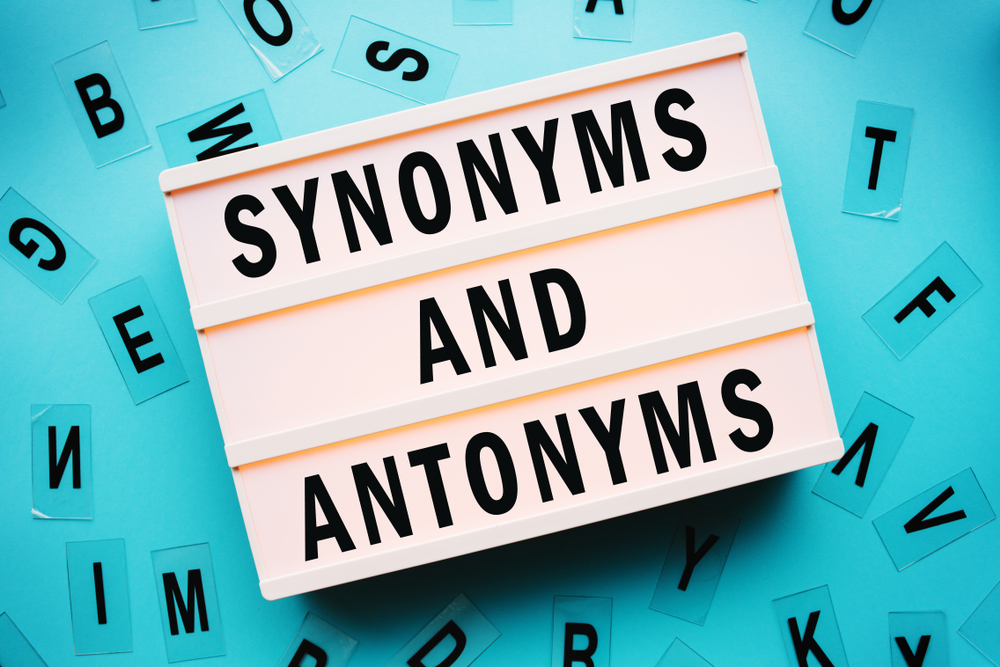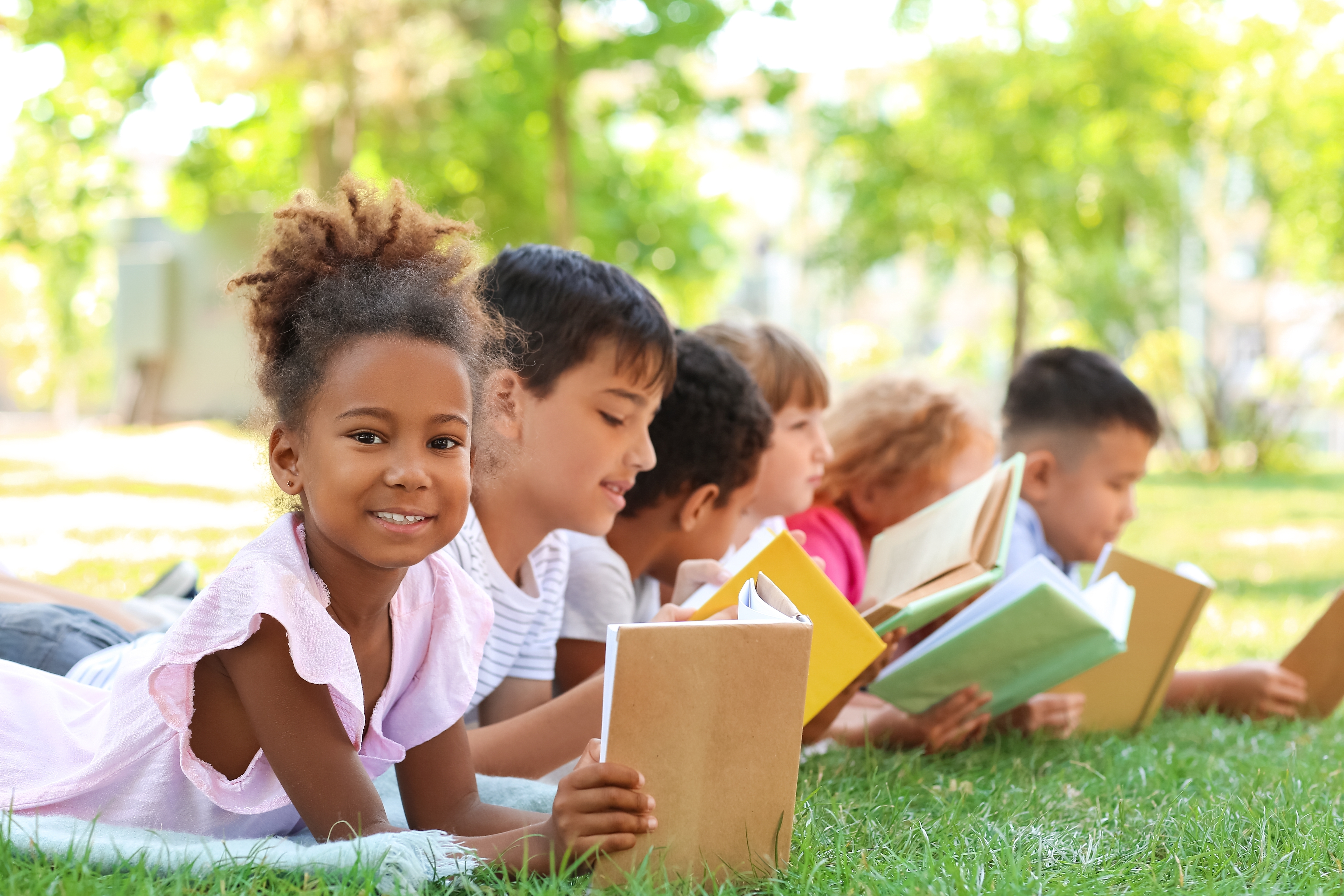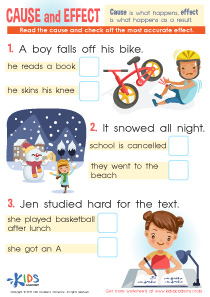Vocabulary enhancement Normal Reading Non-Fiction Worksheets for 6-Year-Olds
7 filtered results
-
From - To
Our "Vocabulary Enhancement Normal Reading Non-Fiction Worksheets for 6-Year-Olds" are crafted to boost young readers' language skills through engaging non-fiction content. Perfectly tailored for early grade students, these worksheets make learning fun and effective. They help kids expand their vocabulary, improve reading comprehension, and build a strong foundation in understanding factual texts. Each worksheet is designed with attractive visuals and thought-provoking exercises that keep children motivated. Available as printable resources, they are an excellent addition to both classroom activities and home learning. Empower your 6-year-old with the tools they need for reading success!
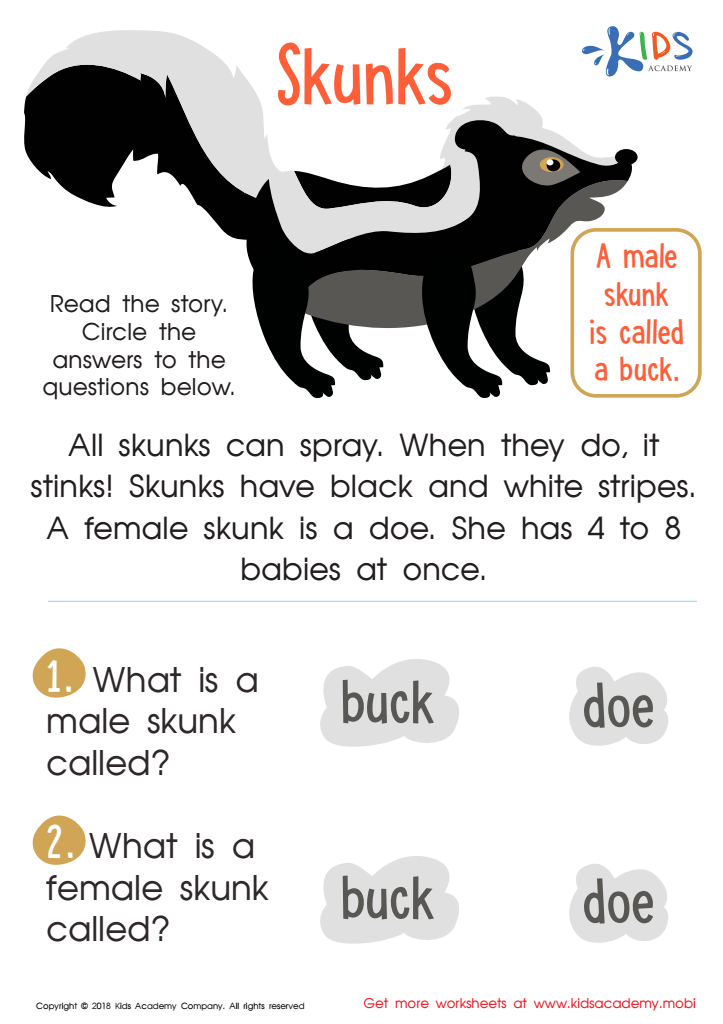

Skunks Worksheet
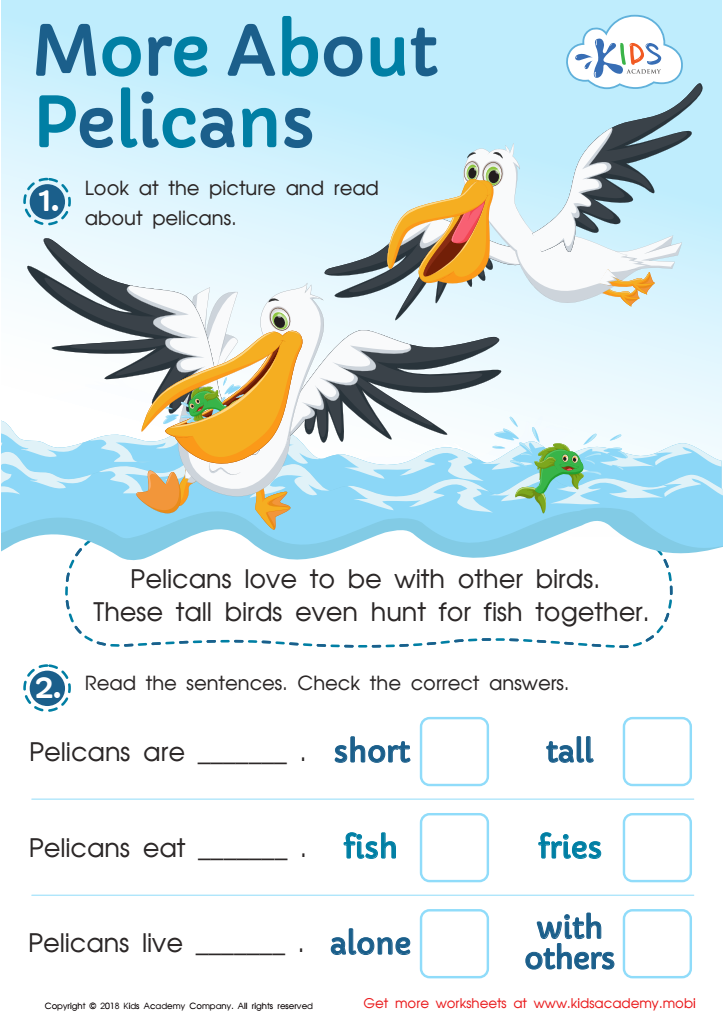

More About Pelicans Worksheet


Pelicans Worksheet
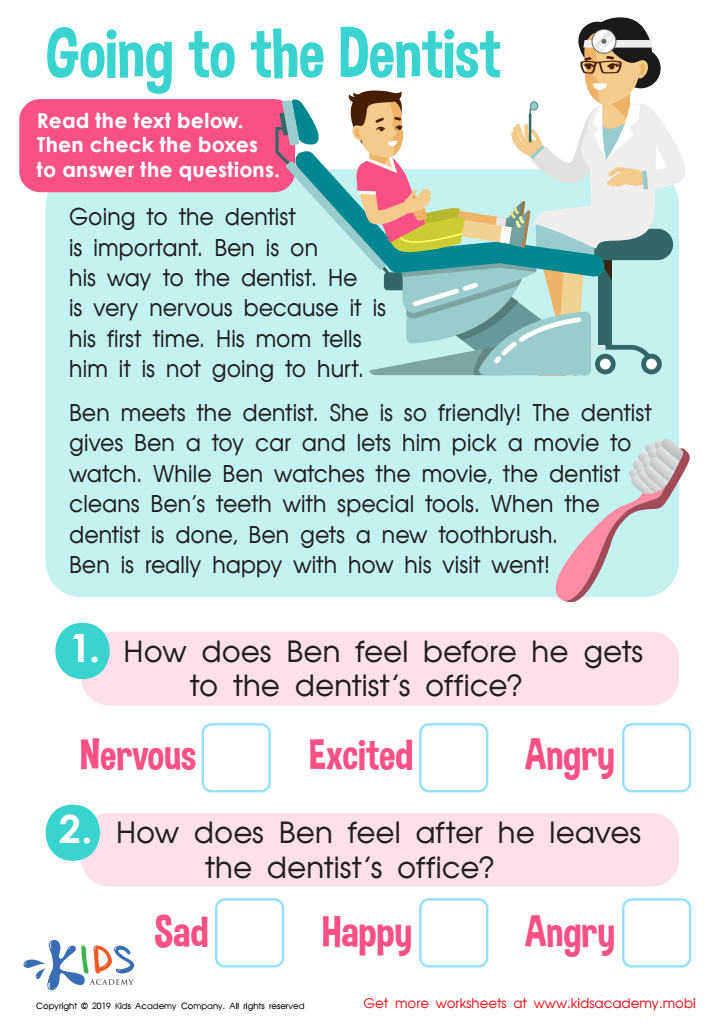

Going to the Dentist Worksheet


Craft and Structure: Assessment 2 Worksheet
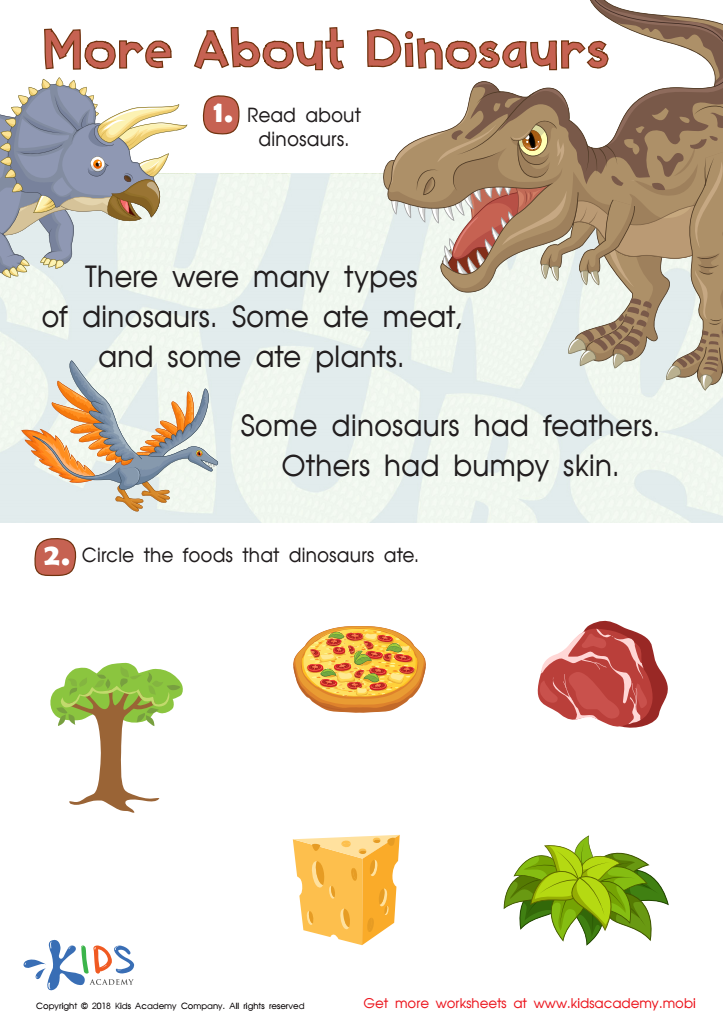

More About Dinosaurs Worksheet
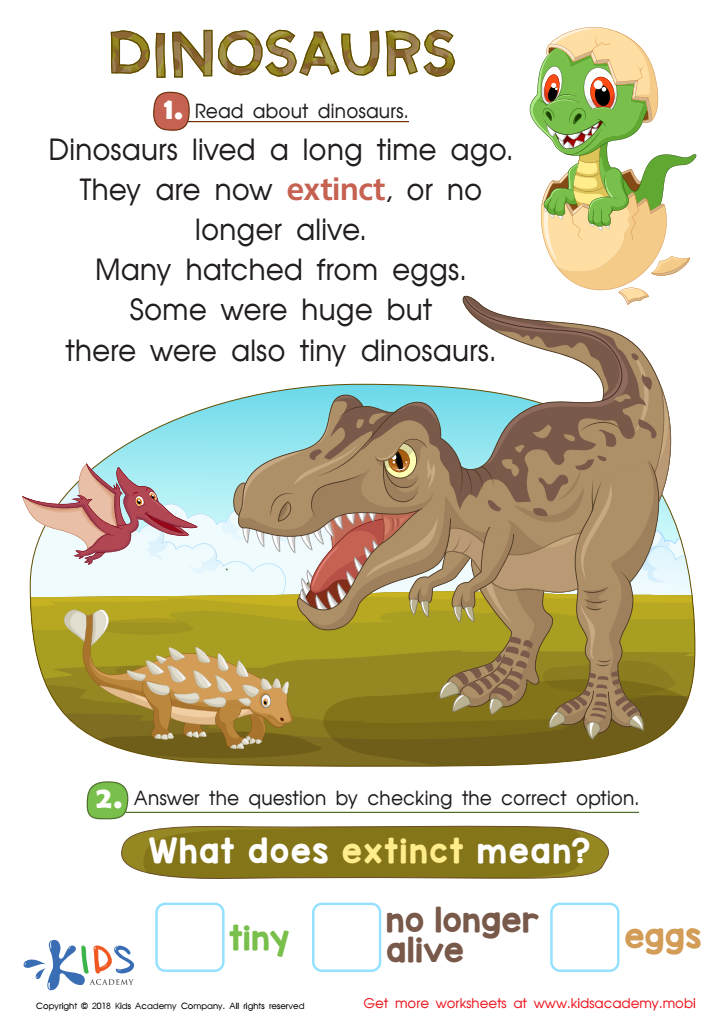

Dinosaurs Worksheet
Parents and teachers should prioritize vocabulary enhancement and normal reading of non-fiction for 6-year-olds because it is crucial for cognitive and language development. At this age, children are like sponges, rapidly absorbing information and forming the building blocks for later educational success. Incorporating non-fiction reading exposes them to a diverse vocabulary and factual content about the world, expanding their knowledge base and sparking curiosity.
Enhanced vocabulary not only improves communication skills but also boosts comprehension and critical thinking. When children understand more words, they can better grasp complex ideas and instructions in varied subjects. Non-fiction texts, with their informational richness, introduce children to specific terminology and concepts that are often absent in fiction, such as scientific terms, historical events, or factual descriptions, which can foster a love for lifelong learning.
Moreover, engaging with non-fiction helps children develop different cognitive skills like summarization, comparison, and questioning. It nurtures a sense of curiosity about real-world topics and encourages analytical thinking, which is essential for academic success across disciplines. Early proficiency in reading and understanding non-fiction sets the stage for effective learning in later grades, helping to close the vocabulary gap and support all areas of early childhood development.
 Assign to My Students
Assign to My Students



